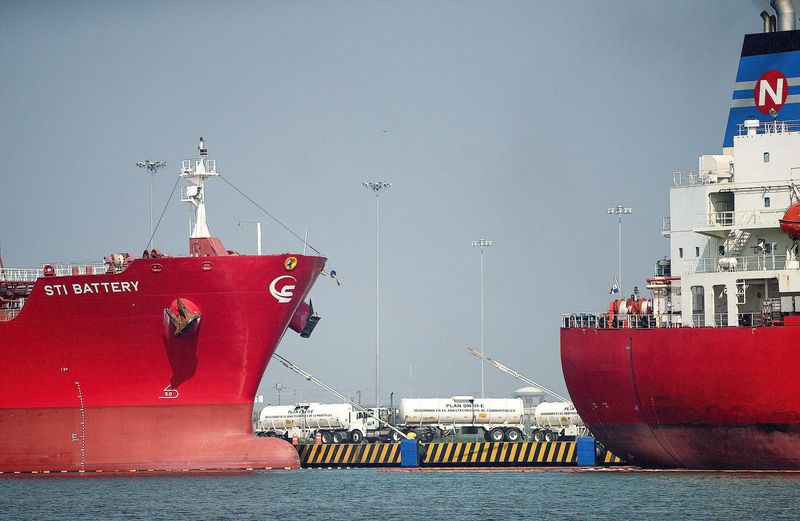Oil prices rebound on fears of supply disruption from tropical storm
By Yuka Obayashi
TOKYO (Reuters) - Crude prices bounced on Wednesday as concerns about Tropical Storm Francine disrupting supply of oil outweighed worries about demand.
Brent crude futures climbed 39 cents, or 0.6%, to $69.58 a barrel by 0031 GMT while U.S. crude futures were at $66.19 a barrel, up 44 cents, or 0.7%.
Both benchmarks fell nearly $3 on Tuesday, with Brent hitting its lowest level since December 2021 and WTI falling to a May 2023 trough, after OPEC+ revised down its demand forecast for this year and 2025.
"Investors adjusted their positions after Tuesday's sharp drop," said Hiroyuki Kikukawa, president of NS Trading, a unit of Nissan (OTC:NSANY ) Securities.
"The rebound was also driven by concerns that the storm could disrupt supply, with some production facilities already suspended," he said, though he predicted the market would remain bearish due to fears about slowing global demand.
Tropical Storm Francine was on track on Tuesday to become a hurricane overnight, the U.S. National Hurricane Center said, prompting Louisiana residents to flee inland and oil and gas companies to shut Gulf of Mexico production.
About 24% of crude production and 26% of natural gas output in the U.S. Gulf of Mexico were offline due to the storm, the U.S. Bureau of Safety and Environmental Enforcement (BSEE) said on Tuesday.
On Tuesday, the Organization of the Petroleum Exporting Countries (OPEC) said in a monthly report world oil demand would rise by 2.03 million barrels per day (bpd) in 2024, down from last month's forecast for growth of 2.11 million bpd.
OPEC also cut its 2025 global demand growth estimate to 1.74 million bpd from 1.78 million bpd.
But the U.S. Energy Information Administration (EIA) said on Tuesday global oil demand is set to grow to a bigger record this year while output growth will be smaller than prior forecasts.
Meanwhile, China's daily crude oil imports rose last month to their highest in a year, customs data and Reuters records showed on Tuesday, as shipments staged a tentative recovery on lower crude oil prices and improving refining margins.
Source: Investing.com
